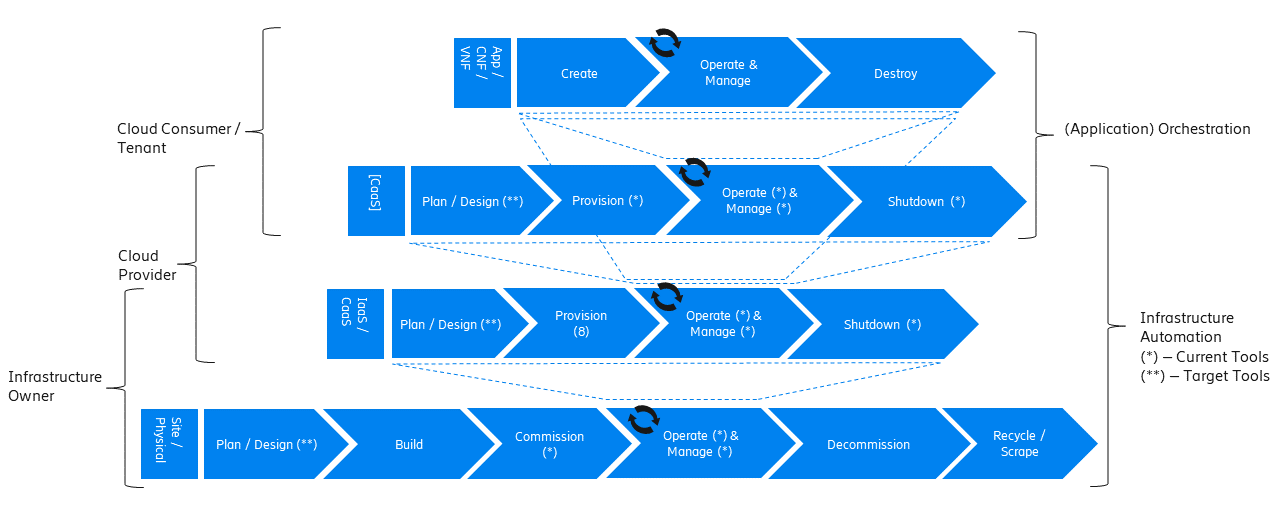In a typical telecom operator environment, infrastructure Life Cycle Management is highly complex and error-prone. The environment, with its multiple vendors and products, is maintenance expensive (both time and costs) because of the need for complex planning, testing, and the out-of-business-hours execution required to perform disruptive maintenance (e.g., upgrades) and to mitigate outages to mission-critical applications. Processes and tooling for infrastructure management across hybrid environments create additional complexity due to the different levels of access to infrastructure: hands-on access to the on-premise infrastructure but only restricted access to consumable services offered by public clouds.
Life cycle operations, such as software or hardware upgrades (including complex and risky firmware updates), typically involve time-consuming manual research and substantive testing to ensure that an upgrade is available, required, or needed, and does not conflict with the current versions of other components. In a complex and at-scale Hybrid Multi-Cloud environment, consisting of multiple on-premise and public clouds, such a manual process is ineffective and, in many cases, impossible to execute in a controlled manner. Hence, the need for automation.
The goals of LCM are to provide a reliable administration of a system from its provisioning, through its operational stage, to its final retirement. Key functions of Infrastructure LCM:
...
- take the inputs from Repositories, Available Software Versions, and Dependencies
- run the software version changes
- dynamically remediate dependencies during the change process to optimise outcome
- ensure that the system is consistent across its life cycle by maintaining it in accordance with the intent templates
The following diagram provides mapping between different stages of the lifecycle automation across all layers of the stack to owners of infrastructure and cloud and the tenant as the consumer of the cloud services. The diagram defines the scope of the Infrastructure LCM Automation as composed of LCM Automation for Site/Physical Infrastructure, LCM Automation for IaaS/CaaS , and LCM Automation for CaaS within the tenancy layer.
Note: Stages of LCM need to be aligned to the previous description ((Build, Monitor, Maintain, Retire)
